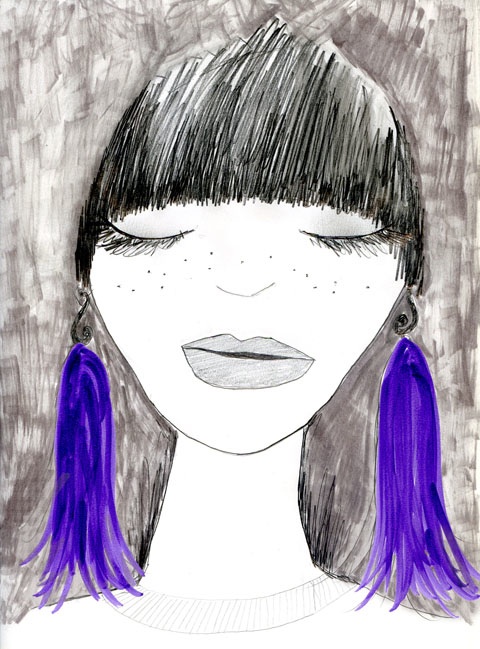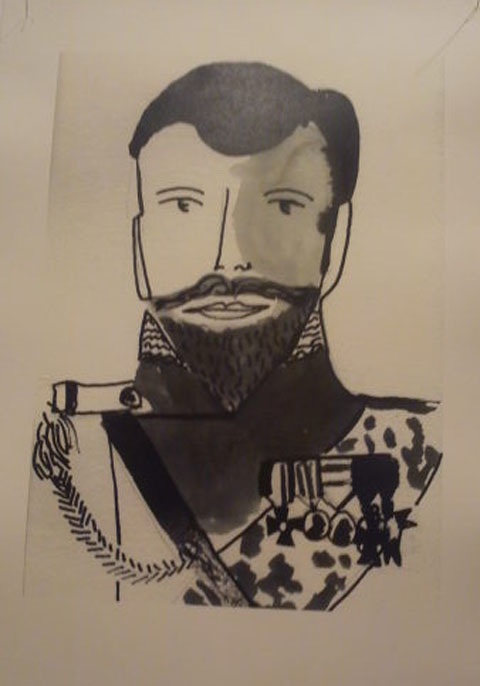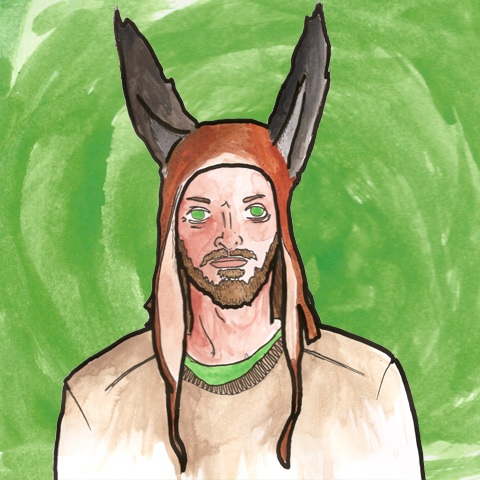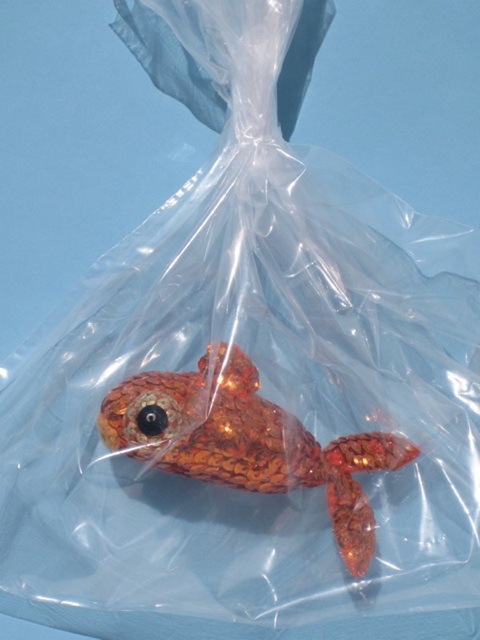Few people have changed the world of fashion and people’s perception of femininity as Christian Dior. Revered in his own lifetime as a fashion god at the forefront of post-war modernity with his celebrated ‘New Look’. At his side was friend and lifelong collaborator Renée Gruau who would create some of the most enduring fashion images of the 20th century.
In the third of its fashion based exhibitions Somerset House has gathered together a strong collection of Gruau’s work from the 1950s right up until the time he finished working with the house of Dior in the 1980s.
Whether translating Dior’s floral inspiration or producing illustrations for the ever masculine Eau Sauvage fragrance, abortion it is the simplicity in Gruau’s work that always jumps to the fore. All at once the work is of its own time but also undoubtedly modern and timeless. The exhibition takes you through several distinct elements of Gruau’s work and his progression as an illustrator of not just Dior but the inspirations of the time are clear.
The collection is divided into sections including Gruau’s Flower Woman and his work on Gesture and Attitude, order which contains some of his most recognised works. Also present is a series of L’Homme Gruau. When Gruau first illustrated for the Eau Sauvage fragrance the worked caused quite a stir for showing a man in the intimacy of just his bathrobe. Gruau would continue to push this further in future pieces, viagra sale such as the scandalous naked man shaving concealed in shadow.
The sincere friendship between Dior and Gruau can be seen throughout the collaborative works; a shared vision of two of the most creative men of the 20th century. The exhibition highlights Gruau’s influences in several pieces such as Japanese prints. Accompanying the illustrations (behind a rather heavy gauze) are several pieces of Dior Haute Couture. The New Look coat is a sight to be hold, as is the painted dress from the Autumn/Winter couture collection 2010 by John Galliano, displaying both Christian Dior and René Gruau’s enduring influence.The final part of the exhibition shows the dramatic influence Gruau has had on the world of fashion illustration with a collection of contemporary works by modern artists.
At £6 this exhibition isn;t expensive in comparison to large-scale London exhibitions, but at the same time it isn’t enormous. However, for anyone with even a passing interest in Dior, the 1950s, contemporary culture, advertising or illustration this exhibition is a must see. Photography is not allowed of the exhibits so make sure you spend your time soaking in the work: the clarity of the lines, the extensive range of techniques, the boundaries pushed – from a time before Illustrator or Photoshop were even dreamed of.
For visiting information, visit the Somerset House website.

Few people have changed the world of fashion and people’s perception of femininity as Christian Dior. Revered in his own lifetime as a fashion god at the forefront of post-war modernity with his celebrated ‘New Look’. At his side was friend and lifelong collaborator Renée Gruau who would create some of the most enduring fashion images of the 20th century.
In the third of its fashion based exhibitions Somerset House has gathered together a strong collection of Gruau’s work from the 1950s right up until the time he finished working with the house of Dior in the 1980s.
Whether translating Dior’s floral inspiration or producing illustrations for the ever masculine Eau Sauvage fragrance, approved it is the simplicity in Gruau’s work that always jumps to the fore. All at once the work is of its own time but also undoubtedly modern and timeless. The exhibition takes you through several distinct elements of Gruau’s work and his progression as an illustrator of not just Dior but the inspirations of the time are clear.
The collection is divided into sections including Gruau’s Flower Woman and his work on Gesture and Attitude, sildenafil which contains some of his most recognised works. Also present is a series of L’Homme Gruau. When Gruau first illustrated for the Eau Sauvage fragrance the worked caused quite a stir for showing a man in the intimacy of just his bathrobe. Gruau would continue to push this further in future pieces, such as the scandalous naked man shaving concealed in shadow.
The sincere friendship between Dior and Gruau can be seen throughout the collaborative works; a shared vision of two of the most creative men of the 20th century. The exhibition highlights Gruau’s influences in several pieces such as Japanese prints. Accompanying the illustrations (behind a rather heavy gauze) are several pieces of Dior Haute Couture. The New Look coat is a sight to be hold, as is the painted dress from the Autumn/Winter couture collection 2010 by John Galliano, displaying both Christian Dior and René Gruau’s enduring influence.The final part of the exhibition shows the dramatic influence Gruau has had on the world of fashion illustration with a collection of contemporary works by modern artists.
At £6 this exhibition isn;t expensive in comparison to large-scale London exhibitions, but at the same time it isn’t enormous. However, for anyone with even a passing interest in Dior, the 1950s, contemporary culture, advertising or illustration this exhibition is a must see. Photography is not allowed of the exhibits so make sure you spend your time soaking in the work: the clarity of the lines, the extensive range of techniques, the boundaries pushed – from a time before Illustrator or Photoshop were even dreamed of.
For visiting information, visit the Somerset House website.

Few people have changed the world of fashion and people’s perception of femininity as Christian Dior. Revered in his own lifetime as a fashion god at the forefront of post-war modernity with his celebrated ‘New Look’. At his side was friend and lifelong collaborator René Gruau who would create some of the most enduring fashion images of the 20th century.
In the third of its fashion based exhibitions Somerset House has gathered together a strong collection of Gruau’s work from the 1950s right up until the time he finished working with the house of Dior in the 1980s.
Whether translating Dior’s floral inspiration or producing illustrations for the ever masculine Eau Sauvage fragrance, viagra it is the simplicity in Gruau’s work that always jumps to the fore. All at once the work is of its own time but also undoubtedly modern and timeless. The exhibition takes you through several distinct elements of Gruau’s work and his progression as an illustrator of not just Dior but the inspirations of the time are clear.
The collection is divided into sections including Gruau’s Flower Woman and his work on Gesture and Attitude, stomach which contains some of his most recognised works. Also present is a series of L’Homme Gruau. When Gruau first illustrated for the Eau Sauvage fragrance the worked caused quite a stir for showing a man in the intimacy of just his bathrobe. Gruau would continue to push this further in future pieces, such as the scandalous naked man shaving concealed in shadow.
The sincere friendship between Dior and Gruau can be seen throughout the collaborative works; a shared vision of two of the most creative men of the 20th century. The exhibition highlights Gruau’s influences in several pieces such as Japanese prints. Accompanying the illustrations (behind a rather heavy gauze) are several pieces of Dior Haute Couture. The New Look coat is a sight to be hold, as is the painted dress from the Autumn/Winter couture collection 2010 by John Galliano, displaying both Christian Dior and René Gruau’s enduring influence.The final part of the exhibition shows the dramatic influence Gruau has had on the world of fashion illustration with a collection of contemporary works by modern artists.
At £6 this exhibition isn;t expensive in comparison to large-scale London exhibitions, but at the same time it isn’t enormous. However, for anyone with even a passing interest in Dior, the 1950s, contemporary culture, advertising or illustration this exhibition is a must see. Photography is not allowed of the exhibits so make sure you spend your time soaking in the work: the clarity of the lines, the extensive range of techniques, the boundaries pushed – from a time before Illustrator or Photoshop were even dreamed of.
For visiting information, visit the Somerset House website.
this illustration by Matilde Sazio” src=”http://www.ameliasmagazine.com/wp-content/uploads/2010/11/1Lisa-Tilleys-U-Old-Bag-bespoke-bags-by-Matilde-Sazio-1.jpg” alt=”Bespoke bags by Lisa Tilley, viagra order illustration by Matilde Sazio” width=”480″ height=”330″ />
Bespoke bags by Lisa Tilley, doctor illustration by Matilde Sazio
As anyone who’s ever been to one will testify, a craft fair is a lot like a box of chocolates, you can never tell quite what you’re going to get. I’ve frequented enough shockers in my time to know that some people’s idea of what constitutes ‘craft’ is pretty loose, from magnetic hematite jewellery that has obviously been shipped-in from Asia and merely assembled in someone’s front room, to the most ghastly knitted nativity scenes, felted tea cosies, pickled eggs and even pot plants. So it was with some trepidation that I made my way over to MADE10, at Brighton’s Corn Exchange, to sample the delights therein. That slightly excited, twitchy, ‘lucky dip’ feeling is usually part of the fun for me. Not so, I discovered, when you’ve already offered to write a review of the stands. I spent much of my journey over there wondering what I’d do if I couldn’t find anything I wanted to write about. Thankfully, I needn’t have worried. MADE is a craft fair for connoisseurs.

Jewellery by Alison Haddon, photograph by Rosie Shephard
Yes, there was the obligatory smattering of twee, albeit the kind of well-made and excessively posh twee that will soon be gracing the pages of glossy interiors magazines across the land. But there was also a good amount of properly exciting stuff too. Most of the stands had a foot firmly in both camps, sporting items that were not only extremely saleable but well made and very stylish indeed. Here’s my pick of the very best MADE10 had to offer.

Cup and saucer by Esther Coombs, photograph by Rosie Shephard
The work of Esther Coombs (who we’ve featured before, here) fits squarely into the last category. Her upcycled vintage ceramics feature hand-drawn illustrations of everything from delicate doilies to sprawling cityscapes, bringing a new layer of narrative to tired tea sets and turning them back into truly covetable 21st century objects. Brutalist tower blocks butt up against the very prettiest fifties florals, lending them a little bit of edge and a nice helping of relevance, not to mention humour.

Cake stand by Esther Coombs, photograph by Rosie Shephard
Her cake stands are made up of mismatched cups, saucers and glasses stacked on top of one another. These are particularly lovely and will no doubt prove popular with Christmas shoppers at this year’s fair. Going on my wish list will be the chintzy china teapot with the drawing of the Eiffel Tower and her brooches made of broken porcelain fragments with added doodles and messages, a snip at only a fiver.

Alison Haddon, Illustration by Celine Loup
Bird motifs are everywhere at the moment and I have to say it’s beginning to do my head in a bit. I think I came away from MADE10 with a touch of ‘bird blindness’, so ubiquitous have they become. Everything seems to have an owl or a swallow on it these days, but Alison Haddon’s jewellery offers something a little bit different. She draws the birds from life, and this gives her finished pieces the extra character and movement that can only come from close observation.

Necklace by Alison Haddon, illustration by Rosie Shephard
With their spindly legs and pointy, pecky beaks, you feel like they could almost squawk at you and fly off their silver perches. She uses feathers and other found materials as well as silver and enamel, rendering her work that much more delicate and quirky. I particularly liked her ‘twig’ earrings, which I guess probably aren’t made out of real twigs, I’m pretty sure they’re silver dipped in, or painted with, enamel. It always puts a smile on my face to see people playing with materials like that.

Necklace by Emma Turpin, photograph by Rosie Shephard
For magpie-minded people like me (bloody birds again, sorry), there was plenty of jewellery to keep us entertained, including Emma Turpin’s Victorian inspired pieces centred around rosettes, frames and silhouettes. I want a Sherlock Holmes necklace with magnifying glass attached, please Emma, or the purple-tasselled flock earrings, which I thought most successfully conjured up the plush decadence of over-the-top Victorian parlours.

Earrings by Emma Turpin, illustration by Rosie Shephard
For me the very best things are created by makers who are simply dancing to their own little tune rather than seeking to mimic, or even set, high street trends. Emily Maude’s prints, collages and memory boxes are quirky and rather beautiful, but it was her fictionalized portraits, which form part of her ‘Everyone I Have Ever Known’ project, which really tickled my fancy. Each drawing in the series is an attempt to remember a particular individual she has met during her lifetime, and there are over 700 of them. In this instance it appears that Emily has met Tsar Nicholas II of Russia, circa 1917, which I seriously doubt, but he does, or did, bare a striking resemblance to her boss, apparently.

Portrait by Emily Maude, photograph by Rosie Shephard
Now, usually I am not a fan of felt, but Barbara Keal has completely changed all that. Her theatrical felt hats, made from sheep and alpaca fleece, are simply magical, transporting the wearer to a fairytale world where woodland creatures frolic by the light of the silvery moon.

Felt hat by Barbara Keal, illustration by Gareth A Hopkins
If you want to spend this winter looking like Mr Tumnus from the Chronicles of Narnia, or Max from Maurice Sendak’s Where the Wild Things Are, and I for one, certainly do, then this is the headgear for you. I reckon this is one maker to watch, and the buzz around the Kealworks stand would imply that lots of other people agree with me.

Fish in a bag by Kate Jenkins of Cardigan Ltd, photograph courtesy of MADE10
There were a few other makers who were obviously riding the crest of a wave, Kate Jenkins’ (who we’ve also featured here, and here) work for her ‘knitwear for life’ label Cardigan Ltd is witty, engaging and covered in sequins, and was attracting a lot of attention.

Suitcase by Lisa Tilley, illustration by Antonia Parker
Lisa Tilley’s bespoke accessories have bags of sass. She mixes vintage and found objects to create unique and oh, so desirable bags, briefcases and suitcases decorated with fish, maps and what look like 60s knitting and cross-stitch patterns. They were going down a storm on opening night, and I’m sure you can expect to find one in a cool boutique near you very soon. For me, however, it was Barbara Keal’s romantic feltwork that really stole the show.

A hairy fox by Barbara Keal, photograph courtesy of MADE10
Categories ,Alison Haddon, ,Antonia Parker, ,Barbara Keal, ,brighton, ,Brutalist, ,Cardigan Ltd, ,Celine Loup, ,Chronicles of Narnia, ,Corn Exchange, ,Doilies, ,Eiffel Tower, ,Emily Maude, ,Emma Turpin, ,Esther Coombs, ,Felted tea cosy, ,Gareth A Hopkins, ,Hematite jewellery, ,Kate Jenkins, ,Kealworks, ,Knitted nativity, ,Lisa Tilley, ,Lucky dip, ,MADE10, ,Matilde Sazio, ,Maurice Sendak, ,Mr. Tumnus, ,Owl, ,Rosie Shephard, ,Sherlock Holmes, ,Swallow, ,Tsar Nicholas II, ,Victorian parlour, ,Where the Wild Things Are
Similar Posts:
- London Fashion Week A/W 2010: Esther Coombs/Nicole Farhi Windows
- Frock Me! Vintage Fair at the Brighton Corn Exchange
- Best Of Collection
- Pretty Christmas Jewellery
- New Designers 2015: The Best Jewellery Design Graduates


